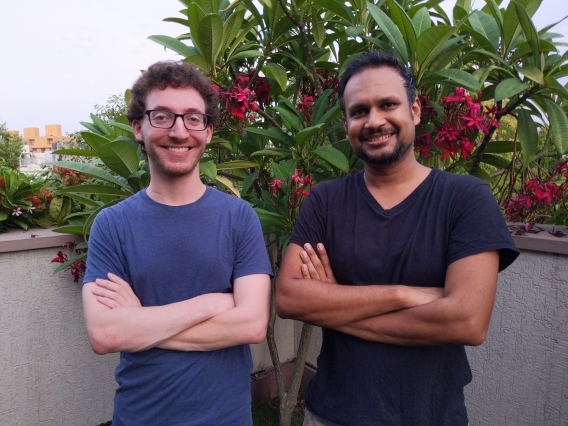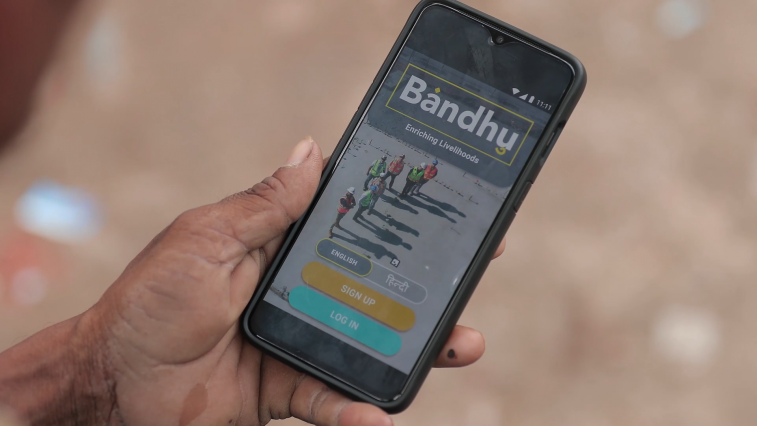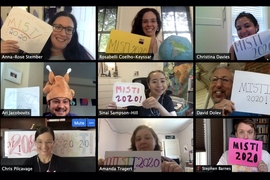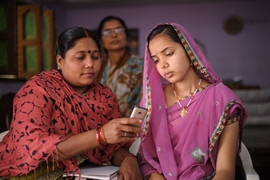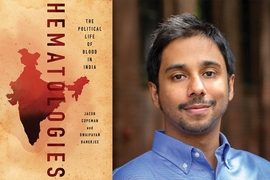The World Economic Forum estimates that there are approximately 139 million domestic migrant laborers in India who move from rural areas to urban centers such as Delhi or Mumbai in search of economic opportunities.
These workers frequently rely on the advice of a “bandhu” (Hindi for friend, brother, or relative) to determine where and when to migrate. Additionally, labor contractors, third-party brokers who link migrant workers with potential employment, are critical actors in the migration decision-making process.
In summer 2018, Rushil Palavajjhala MCP ’19 traveled the Ahmedabad-Mumbai corridor to study labor migration decisions, with support from a grant from the MIT International Science and Technology Initiatives (MISTI) India Program. MISTI-India provides students, researchers, and faculty with an opportunity to be at the forefront of India’s research, technology, and innovation activities, and to contribute to meeting existing and emerging needs.
Palavajjhala observed how aspects of the reliance upon third-party actors in the migration system did not serve workers well. For example, labor contractors’ agreements were often only verbal promises, leaving workers without recourse if they migrated and found no job.
Other challenges for workers include difficulty finding housing, concurrent with lack of job security, and an inability to find the right employers for their skill sets at the right time.
Jacob Kohn MCP ’19 studied information gaps within informal networks in urban ecosystems. Kohn’s thesis, also supported by MISTI-India, examined Mumbai’s informal recycling networks and sought to leverage on-ground surveys and computational analysis to increase visibility into the workings of these informal systems.
Palavajjhala and Kohn combined their experiences, technical skills, and passion for societal equity to design Bandhu, a mobile phone platform, within the MIT entrepreneurship ecosystem. Bandhu minimizes information asymmetries so low-income workers can make confident migration decisions; the app also helps build customized work teams for potential employers. They refined Bandhu during their time at MITdesignX, an academic program in the MIT School of Architecture and Planning (SA+P) dedicated to design innovation and entrepreneurship.
The Bandhu app launched in June 2020 and is currently accessible for users in western India. Palavajjhala and Kohn reflect here on how MIT helped to shape Bandhu, the value of social entrepreneurship at MIT, and how they hope students will continue to use the technical skills acquired at MIT to serve vulnerable populations.
Q: How did your time at MIT and engagements with MISTI influence your outlook on the world?
Palavajjhala: We took different approaches; I went down the policy implementation and business development path, while Jacob focused on adapting technology for on-ground implementation and visualization. Having spent my time at MIT focusing on the finance and development of real estate and public infrastructure, the limitations of government and large organizations were apparent. To solve the seemingly intractable problems of the developing world, one needed to be nimble.
The “hacking” mindset inculcated at MIT was a critical influence, especially when working for the most vulnerable in fragile ecosystems. You tread carefully and find ways to have maximum outcome with minimal intervention. SA+P practica were key to these learnings, from creating digital infrastructure in rural Peru to designing market-based tech solutions for urban policymakers in Mexico.
Kohn: Rushil and I focused our time at MIT on considering how technology and data could empower the most vulnerable, such as India’s migrant workers. We can design tech solutions for nearly everything, but it is much more challenging to design tech for systemic change in an informal ecosystem. MISTI gave us the support and freedom to test our thesis topics in the real world and learn from on-ground realities.
Having a knowledge of Hindi, I hoped to deepen my understanding of India’s urbanization and informality processes and leverage MISTI’s wide-ranging networks as I studied Mumbai’s informal recycling ecosystem. My thesis gave me a better appreciation for the sheer diversity of implementation strategies in India and what that could mean for Bandhu’s chances of success in any region of the country.
Q: Why did you choose to work through entrepreneurial efforts to attempt to address structural challenges?
Palavajjhala: Having worked with the private sector, nonprofits, government, and academia, I noted the frequent difficulty in coping with the pace at which the world was changing. Most proposed solutions also found it hard to rapidly reach the necessary scale. Our studies at DUSP [the Department of Urban Studies and Planning] helped us investigate such problems, and other coursework at MIT and Harvard furthered these realizations. My exposure to the world of blended finance, impact investing, private equity, and venture capital suggested that markets and private capital could play a crucial role.
The effect of technology’s externalities on society, however, seemed to justify a degree of “techno-pessimism.” Yet MIT’s entrepreneurial ecosystem, with a keen eye for social impact, especially MITdesignX, was an ideal place to mold my thesis into a potentially scalable solution that could address systemic causes of socioeconomic inequity. I believe that if one can find ways to leverage technology to balance information and power asymmetries, markets are the most powerful medium to make an impact.
Kohn: My experiences studying political science and working as a management consultant in and around Washington helped me identify a disconnect between high-level policy ideas and on-ground implementation: Bureaucracy sometimes stifles technological innovation. MIT offered an opportunity for me to bridge the policy and technology realms.
Volunteering and studying in India, I saw how informal systems and deep-seated cultural norms would often render top-down policies ineffective. I also saw how gradual nudges, strong relationships and trust, and technology can go much further to make sustainable behavioral change. To me, these strategies are well-suited for an entrepreneurial environment, such as the one that Bandhu inhabits.
Q: What are the next steps for Bandhu?
Palavajjhala: Emerging from the controlled testing phase during the Covid-19 lockdown, we’re starting small and piloting the latest version of Bandhu as a simple job-matching platform. Our plans over the next year are much bigger. As we collect data points and learn about our users’ preferences for jobs and housing, we’ll be able to build a trusted platform that recommends safe migration paths for our users — particularly urgent during the pandemic, as workers struggle to reconnect to the job market and employers struggle to find workers and restart India’s economy.
Kohn: We’ll collaborate with on-ground local and regional NGOs [non-governmental organizations] as we scale. We look forward to continuing to work with the MIT community and our mentors, hosting talented and passionate interns and team members, fostering new ideas and cultural experiences, and sharing what we learn with the MIT ecosystem, to which we owe much.
